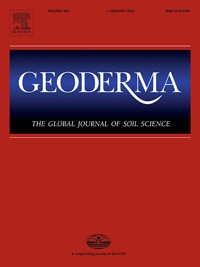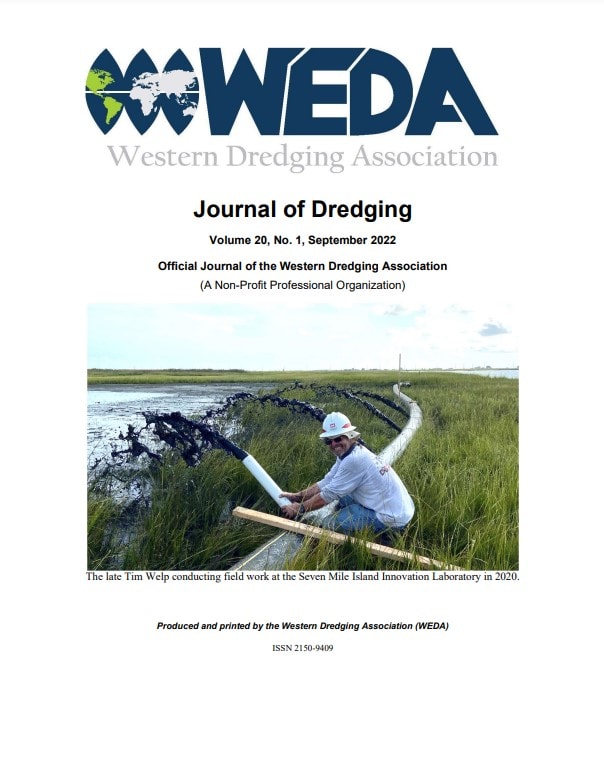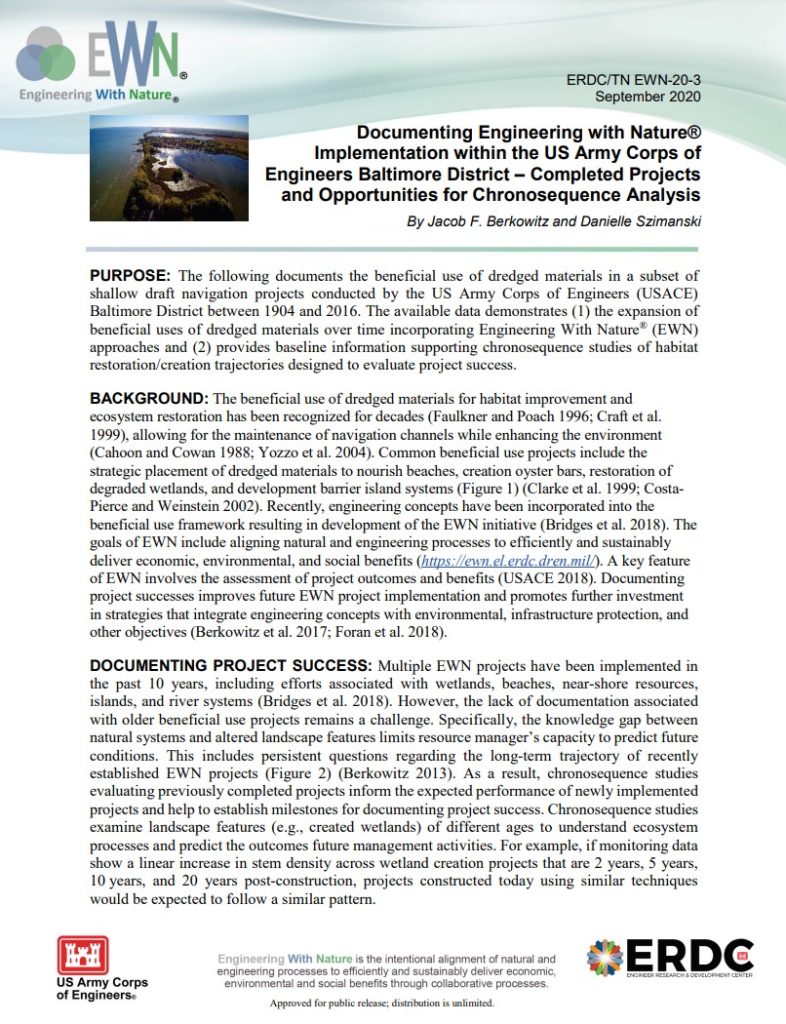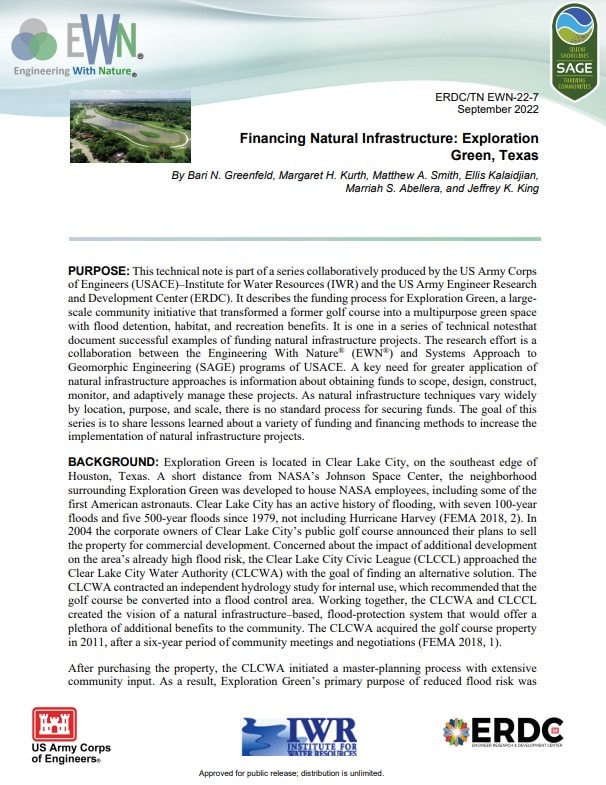Assessing Drivers of Coastal Tundra Retreat at Point Hope, Alaska

Shoreline erosion over the last few decades along the Point Hope, Alaska, USA coastline has led to considerable loss of tundra behind the beach. Analysis of available remote sensing, morphology, and hydrodynamic datasets are used to inform the time scales and mechanisms of coastal land loss at Point Hope, in part through integration of these […]
Quantifying mineral-associated organic matter in wetlands as an indicator of the degree of soil carbon protection

Mineral-associated organic matter (MAOM) is one pool of SOM recently shown to protect soil organic C from mineralization. However, most MAOM research has been in agriculture and forest mineral soils. Given the magnitude of soil C stored in wetlands, this study sought to determine the abundance of MAOM in wetlands. A standard method for quantifying […]
The effects of coastal marsh geometry and surge scales on water level attenuation

Coastal wetlands are an effective natural and nature-based feature to mitigate coastal flood hazards. While the sheltering and attenuation offered by wetlands are recognized, the protection level varies based on wetland and storm characteristics. Here we focus on the effects of the spatial scales of the coastal wetlands (i.e., channel geometry, marsh elevation-gradient) and the […]
The Long Game – Landscape Architecture Magazine

Landscape architects are working with the U.S. Army Corps of Engineers and building new networks through the Engineering With Nature program. The implications could be transformative for both. Read about how ERDC and the Dredge Research Collaborative worked together to explore ways for landscape architects and engineers to join forces to utilizing dredged material while […]
Enhancing Benefits Evaluation for Water Resources Projects Towards a More Comprehensive Approach for Nature-Based Solutions: Consideration of Nature-Based Solutions in USACE Planning Studies

This document is the second in a series of reports produced as part of this collaborative effort. It is intended to outline the steps and processes taken to select six final case studies for analysis. The report includes: a) a description of the process taken to compile and inventory 150 planning studies, b) a summary […]
A Multi-Decadal Assessment of Dredged Sediment Beneficial Use Projects Part 1: Ecological Outcomes

Dredged sediment has been used to create and restore wetlands and other landforms for decades as part of beneficial use initiatives. Previous studies demonstrate that beneficial use projects yield ecological functions such as habitat maintenance, floodwater detention, and biogeochemical cycling. However, questions persist about the long term ecological trajectory of beneficial use projects due to […]
Documenting Engineering with Nature® implementation within the US Army Corps of Engineers Baltimore District – completed projects and opportunities for chronosequence analysis

The purpose of this technical note is to document the beneficial use of dredged materials in a subset of shallow draft navigation projects conducted by the US Army Corps of Engineers (USACE) Baltimore District between 1904 and 2016. The available data demonstrates (1) the expansion of beneficial uses of dredged materials over time incorporating Engineering […]
Revisiting historic dredged material habitat improvement sites informs the future of beneficial use initiatives

The beneficial use (BU) of dredged materials improves environmental outcomes while maximizing navigation benefits and minimizing costs. As a result, numerous BU projects have been implemented since the 1970s and BU efforts continue to expand within the navigation dredging portfolio. Yet, few studies document mid- to long-term project benefits due to a combination of 1) […]
A Multi-Decadal Assessment of Dredged Sediment Beneficial Use Projects Part 2: Ecosystem Functions, Goods, and Services

Data and observations made at > 40-year-old dredged sediment beneficial use project sites were used to link ecosystem functions (e.g., maintenance of floral and faunal habitat, energy dissipation) with an established ecosystem goods and services framework (e.g., navigation channel maintenance, hazard reduction, ecosystem sustainability). This approach works toward quantifying the full suite of positive outcomes […]
Financing Natural Infrastructure: Exploration Green, Texas

This technical note is part of a series collaboratively produced by the US Army Corps of Engineers (USACE)–Institute for Water Resources (IWR) and the US Army Engineer Research and Development Center (ERDC). It describes the funding process for Exploration Green, a large- scale community initiative that transformed a former golf course into a multipurpose green […]

